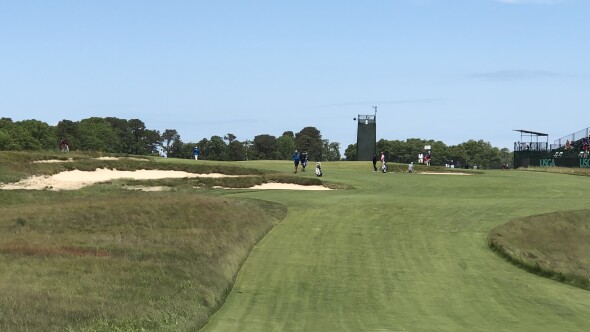SOUTHAMPTON, N.Y. - It’s 3:45 a.m. Tuesday morning. Do you know where your superintendent is?
He or she might be among the 200 crew members gathered at Shinnecock Hills Golf Club to get the place ready each morning for the U.S. Open.
Many of them are volunteers who have ventured from all over – California, Spain, Great Britain as well as from across Long Island – to help Superintendent Jon Jennings get this stunning heathlands prepped for practice rounds and the championship proper on Thursday. Jennings himself has served as a volunteer for the last 16 U.S. Opens. That kind of commitment does not go unnoticed among his peers and helps account for the turnout.
Among many others I recognize: Don Cross from Skokie Country Club on Chicago’s North Side; Rodney Hine from Boston Golf Club; Pat Sisk from Milwaukee Country Club; and turf guru, Dr. Frank Rossi, a distinguished professor at Cornell University.
There’s a buffet line of donuts, fresh fruit and coffee. A pile of sunscreen lotion sits in another corner. Overhead are banners proclaiming sponsors like BASF and Toro, as well as university banners from turf schools, including University of Massachusetts, SUNY-Cobleskill and the University of Connecticut.
If you aren’t an early-morning person, you have no business in this trade. The tent is gradually filling up, and volunteers peruse a four-page spreadsheet that Kennings and his staff have prepared for the day detailing assignments. The list includes mowing heights, delineated with the kind of precision that defines modern championship golf. Note that these are all in decimals, with all of the fine surfaces cut under one-half inch:
* Greens: .095"
* Collars: .285"
* Tees: .300"
* Fairways: .400"
* Approaches: .300"
When Jennings enters the tent at 4:05 a.m. the crowd goes immediately quiet. He is a veteran of these assemblies, though only now for the first time leading it for a U.S. Open. Some guys adopt a football approach. He’s more of a businessman into order without drama. He welcomes the group, speaking first in English, then in rudimentary Spanish, then reverts to his native language to remind them of safety and patience. “Watch out for ropes and trucks,” he says. “We’re operating in the dark. And you don’t have to rush. We have plenty of time.”
Especially when you start your day at 4 a.m.

















Great story. I love the stories behind “the show” and all the unsong hero’s”!